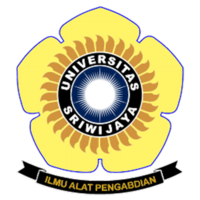Adaptasi Varietas Inpari dan Inpara di Rawa Lebak Dangkal dan Tengahan di Desa Berkat Kabupaten Ogan Komering Ilir, Sumatera Selatan
Abstract
Suparwoto et al, 2019. Adaptation of Inpari and Inpara Varieties in Shallow and Middle Swampy Lands in the Berkat Village Ogan Komering Ilir District, South Sumatra. pp. 13-20.
Varieties are one of the most environmentally friendly, safe and low-cost technologies that farmers can reach in increasing national rice needs, in order to keep pace with the ever-increasing population growth. This activity is conducted in Berkat Village, Sirah Pulau Padang Subdistrict, Ogan Komering Ilir District (OKI), Sumatera Selatan, in dry season of 2016. The purpose was to obtain varieties that could adapted in shallow swampy lands and middle swampy lands with high production. Inpari 15, Inpari 22, Inpari 30 and Inpara 4 are labeled purple (SS class), urea fertilizer, SP-36, KCl, pesticide, herbicide and tarpaulin. In addition the required tools include: hand tractor, meter, scales, machetes, hoes, sprayer. The varieties studied were 4 varieties consisting of Inpari 15, Inpari 22, Inpari 30 and Inpara 4. The method used direct observation in the field, assessment area of 0.5 hectare, each typology 0.25 ha. Fertilizer dosage 150 kg Urea, 100 kg SP-36 and 100 kg KCl / ha. Nursery done 2-3 times moved to adjust the water level so the age of the seedlings reaches 45 days after spread. The variables observed were: plant height, number of productive tillers, panicle length, number of grains per panicle, the number of filled grain per panicle, and production. Observational data are tabulated and analyzed descriptively. The results showed that the production of Inpari 15, Inpari 22, Inpari 30 and Inpari 4 grains in shallow swampy lands ranged from 3.4 to 3.8 tons gkp / ha, better than the production of middle swampy lands, ranging from 2.2 to 2.9 tons gkp / ha, because the swamp in the middle reaches dryness.
Varieties are one of the most environmentally friendly, safe and low-cost technologies that farmers can reach in increasing national rice needs, in order to keep pace with the ever-increasing population growth. This activity is conducted in Berkat Village, Sirah Pulau Padang Subdistrict, Ogan Komering Ilir District (OKI), Sumatera Selatan, in dry season of 2016. The purpose was to obtain varieties that could adapted in shallow swampy lands and middle swampy lands with high production. Inpari 15, Inpari 22, Inpari 30 and Inpara 4 are labeled purple (SS class), urea fertilizer, SP-36, KCl, pesticide, herbicide and tarpaulin. In addition the required tools include: hand tractor, meter, scales, machetes, hoes, sprayer. The varieties studied were 4 varieties consisting of Inpari 15, Inpari 22, Inpari 30 and Inpara 4. The method used direct observation in the field, assessment area of 0.5 hectare, each typology 0.25 ha. Fertilizer dosage 150 kg Urea, 100 kg SP-36 and 100 kg KCl / ha. Nursery done 2-3 times moved to adjust the water level so the age of the seedlings reaches 45 days after spread. The variables observed were: plant height, number of productive tillers, panicle length, number of grains per panicle, the number of filled grain per panicle, and production. Observational data are tabulated and analyzed descriptively. The results showed that the production of Inpari 15, Inpari 22, Inpari 30 and Inpari 4 grains in shallow swampy lands ranged from 3.4 to 3.8 tons gkp / ha, better than the production of middle swampy lands, ranging from 2.2 to 2.9 tons gkp / ha, because the swamp in the middle reaches dryness.
Full Text:
PDFArticle Metrics
Abstract view : 398 timesPDF - 384 times
Refbacks
- There are currently no refbacks.

